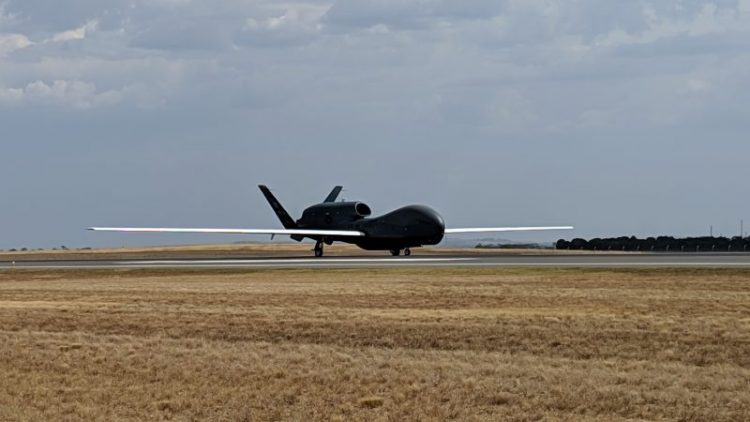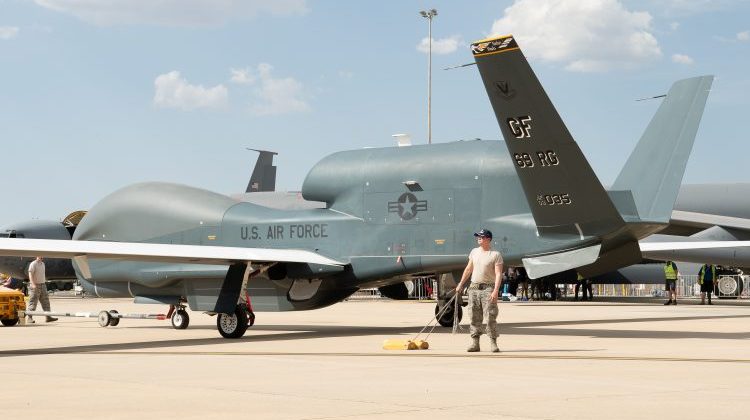
It touched down with a quiet grace – the first time ever a Northrop Grumman Global Hawk unmanned aircraft has landed during an airshow.
The aircraft, with a wingspan greater than a Boeing 737 departed the US base on Guam, in the northern Pacific, and flew nonstop for 5,700 kilometres, arriving at Avalon at 3.30pm.
Global Hawk is no stranger to Australia. One aircraft visited Avalon in 2015 but arrived late at night. Others staged through Australia on route to surveillance missions over Afghanistan early in the war on terror.
Global Hawk is the parent to Triton which Australia is buying to perform high-altitude long-range surveillance out into the Indian and Pacific Oceans.

Global Hawk was developed by Ryan Aeronautical, now part of Northrop Grumman, to meet a US Air Force requirement for broad area overland surveillance, akin to the job done by the Lockheed U-2.
The first Global Hawk flew in February 1998. The aircraft’s ability to fly intercontinental distances was amply demonstrated in April 2001 with a nonstop flight from Edwards USAF base to RAAF Edinburgh, covering 13,219 kilometres in 22 hours.
That was the first pilotless aircraft to cross the Pacific and a world record for absolute distance flown by a UAV and this impressive capability piqued Australia’s interest in an unmanned aircraft able to conduct broad area maritime surveillance (BAMS).
So too did the US Navy and in 2008, a “navalised” Global Hawk won the US Navy BAMS contest against contenders from Boeing and Lockheed Martin.
Global Hawk and Triton perform different jobs but look similar. They can easily be told apart – Global Hawk is operated by the US Air Force and is painted all grey while Triton is flown by the US Navy and is white on top and grey on lower surfaces.












